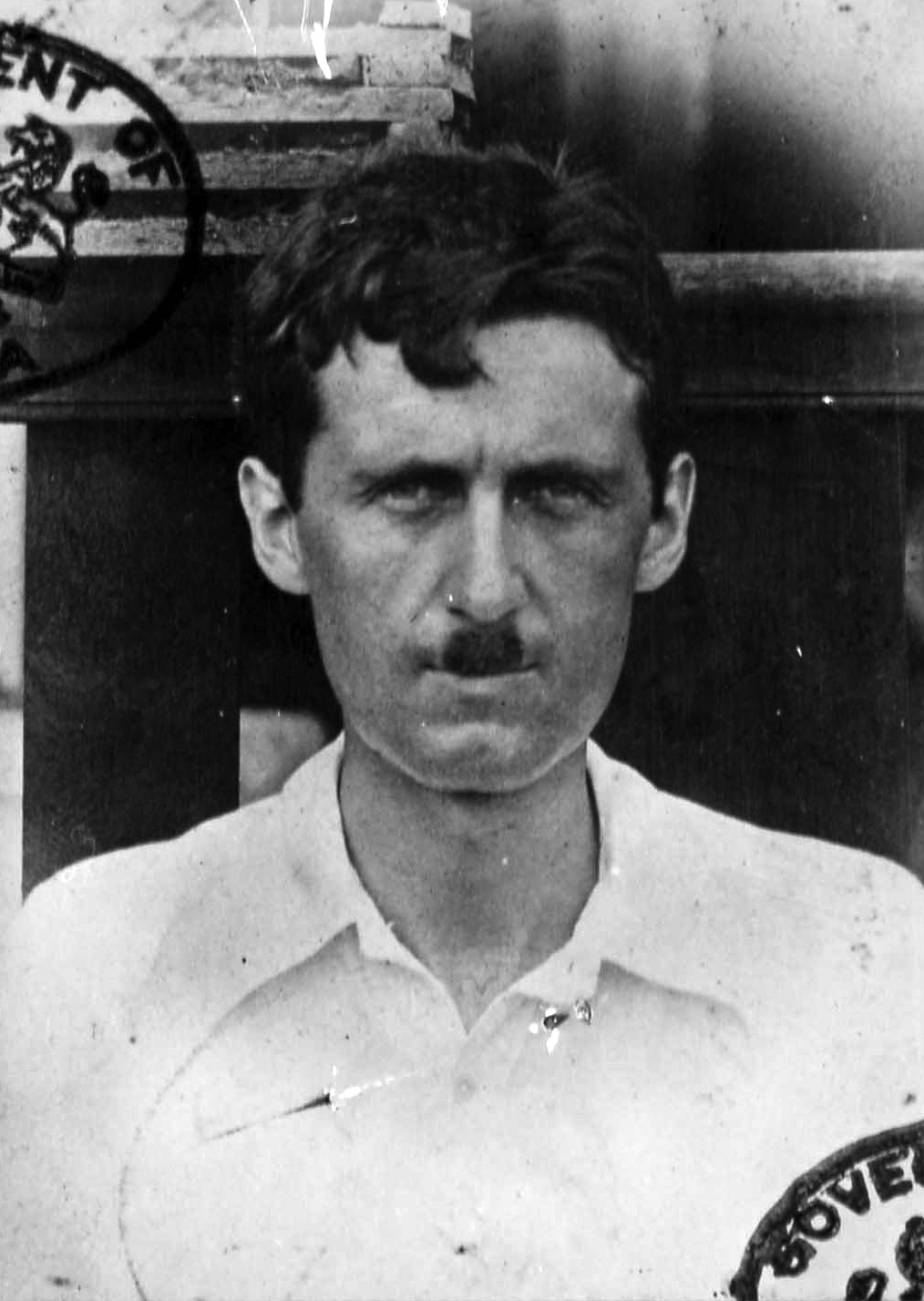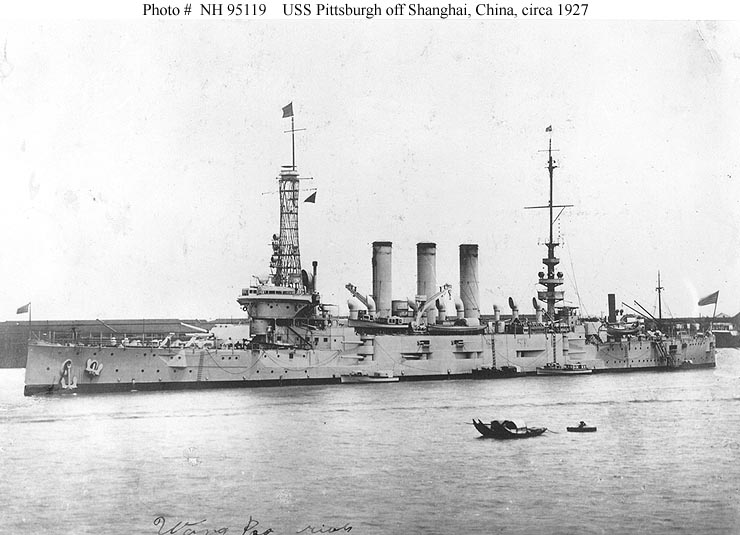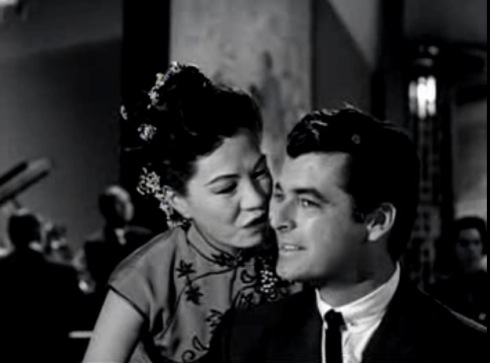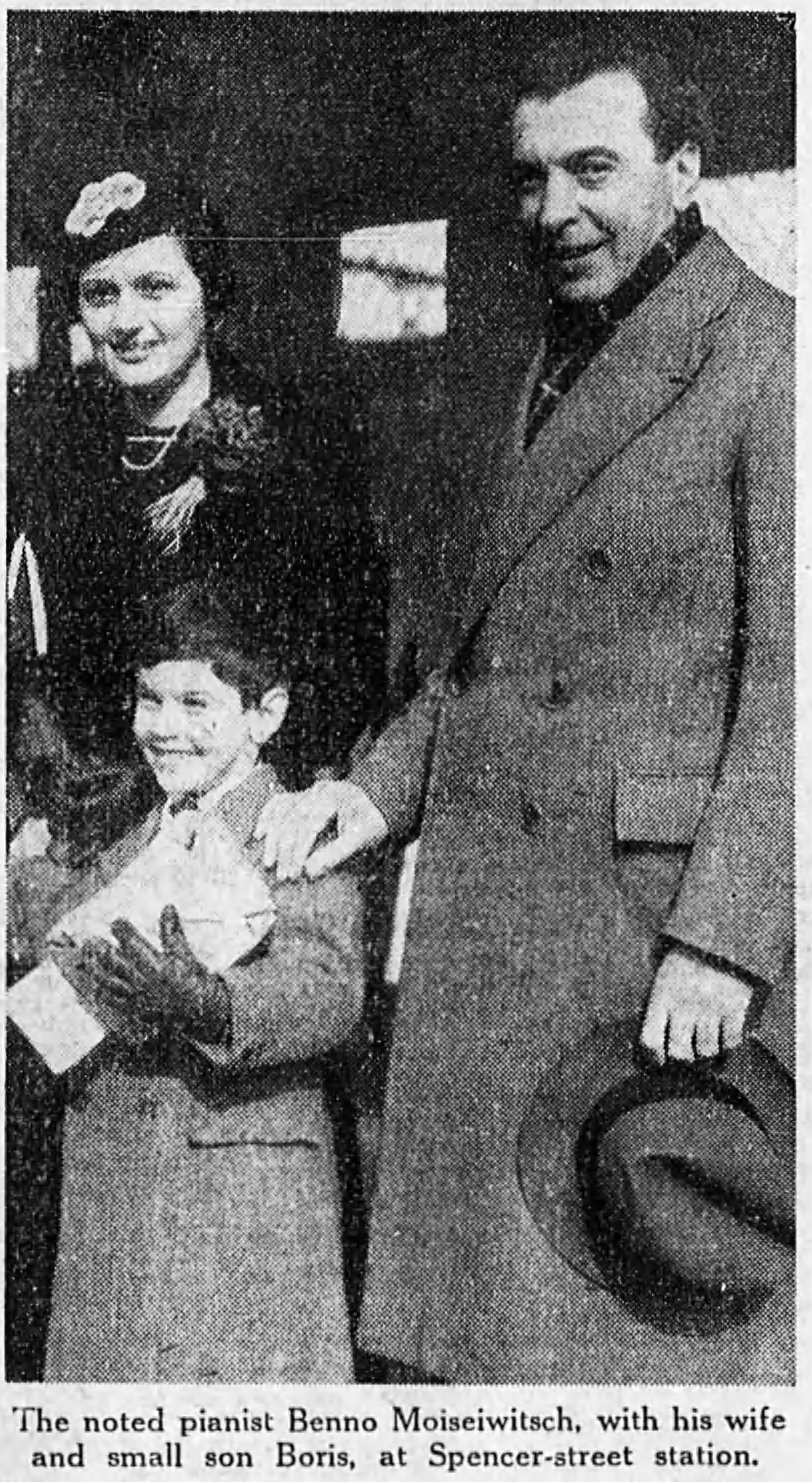Posted: February 11th, 2016 | No Comments »
I’ve been reading, and hugely enjoying, DJ Taylor’s The Prose Factory: Literary Life in Britain Since 1918. Among the nuggets to be picked out is one about George Orwell’s last planned novel, of which only ‘fragments’ remain. Orwell of course served in the British Colonial Police in Burma, an experience that resulted in an outpouring of work (Burmese Days obviously as well as several short stories and a number of non-fiction articles critical of the British Empire in the Far East). Orwell was also a fan, as a boy, of Arnold Bennett, HG Wells and Somerset Maugham and planned a novel in their style. Shortly before his death in 1950, he was working on a new novel….’a rather old-fashioned piece about a young man coming back from the East in the 1920s: a trajectory that exactly parallels Orwell’s own return from Burma in 1927.’ Sadly it was never completed.

Orwell’s passport photo from his Burma Days – sporting a moustache style that would soon go decidedly out of fashion
Posted: February 10th, 2016 | No Comments »
Tuesday, 16th February 2016
7:00 pm – 9:00 pmTavern at the Radisson Xingguo Hotel
News and Censorship in Wartime Shanghai: From the Archives of the Great Northern Telegraph Company
Speaker: Daqing Yang (George Washington University Visiting Scholar, Fudan University)

It is often said that truth is the first casualty of war. With the advance in communications technology and the rise of mass media, governments’ motivation and ability to influence news reporting became much greater. One hundred years ago, the Great War (1914-1918) was the first modern war of information and propaganda.
As the centre of international news in East Asia, Shanghai naturally became a battleground of information warfare shortly after Japanese forces invaded in autumn 1937. Despite the absence of a war declaration, Japanese military exercised belligerent rights by censoring news telegrams transmitted through foreign communications companies in Shanghai. Tapping the archives of such a company for the first time this talk reveals the hitherto unknown story of news and censorship, and explores their implications for the war and society.
ABOUT THE SPEAKER
Daqing Yang is an Associate Professor of History and International Affairs at the George Washington University, where he teaches modern Japanese history. A native of China, Professor Yang graduated from Nanjing University and received his Ph.D. from Harvard University. His research interests include the Japanese empire, World War II, as well as memory and reconciliation. His book, Technology of Empire: Telecommunications and Japanese Expansion in Asia, 1883-1945, was published in 2011. His co-edited works include Communication under the Sea (2006) and Toward a History Beyond Borders: Contentious Issues in Sino-Japanese Relations (2012). In 2015 he was interviewed in the Shanghai Media Group’s documentary on World War II, Another Battleground.
RSVP: bookings@royalasiaticsociety.org.cn
ENTRANCE: Members: 70 RMB Non-members: 100 RMB
VENUE: Tavern; Radisson Plaza Xingguo Hotel, 78 Xing Guo Road (兴国宾馆, 兴国路78å·)
Posted: February 9th, 2016 | No Comments »
This debate never goes away!! In 1912 the China Press was a new English language newspaper established in Shanghai only the year before by Americans from St Louis. The American press was keen to compare productivity….and here’s one way they framed the argument….

Posted: February 8th, 2016 | 1 Comment »
The USS Pittsburgh hit rough seas sailing from Guam to Shanghai in early 1929. The Pittsburgh was the flagship of the United States Asiatic Fleet – seen below in 1927 (note Chinese soldiers aboard) and at anchor in Shanghai.



Posted: February 7th, 2016 | No Comments »
Not much recalled my fans of movies featuring China is 1956’s Flight to Hong Kong. It’s actually not that bad. A white guy raised on the streets of Macao by Mama Lin becomes a diamond smuggler, falls in love and double crosses his gang to get the girl in San Francisco. She gives him the brush off, the police and his old gang are after him so he heads back to Macao (on a flight to Hong Kong – hence the title). Rory Calhoun, a tough guy actor not much remembered now, is the lead with Barbara Rush, a real beauty also not much remembered now, as the dame. Hawaiian-born Soo Yong played Mama Lin and you’ll probably know her from Flower Drum Song or Love is a Many Splendoured Thing. Someone at the ad agency though wasn’t too geographically bright though as somehow Macao came out as ‘Macoa’!

The movie came with a nice tagline – “Filmed in the sin capitals of the world!” and locations did actually include Hong Kong, Macao, Tokyo and San Francisco. Really this is the major reason to watch if you want to see those places in 1956.
 Lobby poster
Lobby poster
 Soo Yong and Rory Calhoun
Soo Yong and Rory Calhoun
 bar life
bar life
 a beggar kid who actually says “No papa, no mama… no whiskey sodaâ€
a beggar kid who actually says “No papa, no mama… no whiskey sodaâ€
 A rather good Chinoiserie bar
A rather good Chinoiserie bar
Posted: February 6th, 2016 | No Comments »
Shanghai was transformed into a “winter haven” for beggars in February 1930….

Posted: February 5th, 2016 | No Comments »
Benno Moiseiwitsch was born in 1890 in Odessa and soon emerged as a talented pianist. He made his London debut in 1909 and his American debut in 1919. His first marriage, to the Australian violinist Daisy Kennedy, broke down after their hectic tour schedules proved incompatible. In 1928 he toured Australia and then headed back to England, which was by then his adopted country (he would become a British subject in 1937). He stopped off in Shanghai late that year.
In Shanghai he fell in love with Anita “Annie” Gensburger, the French-born daughter of a prosperous Franco-Russian family living in Shanghai. They met in the green room after one of Benno’s concerts in the city. Anita was Russian and her mother, Sarah, cooked Benno Russian food while he was visiting. Her father, Henri, apparently invariably fell asleep at concerts. It was, so it seems, a whirlwind romance and on December 30th they announced their engagement.

They married in 1929 in Shanghai. A couple of years later they had a son, Boris. They left Shanghai in January 1929 to continue Benno’s world tour. En-route he appeared in Singapore, just a week after the marriage. They then went to Kuala Lumpur and on to India. Then it was down to South America and then to the USA.Talking in the 1930s Anita recalled that two hours after their marriage she started acting as Benno’s secretary and answering his fan mail.
The marriage lasted until Anita’s death in 1956; Benno died in 1963.

Posted: February 4th, 2016 | No Comments »
Noting a new guide to Xiamen (Amoy as was) from Robert Barge and Camphor Press as it contains a lot of good historical information on the city and former treaty port. Not least, its section on Gulangyu, which I visited in an age, but think fondly of the place often. Apparently, a lot has happened recently, including raising the entry price and the length of the boat trip to reduce visitor numbers, while some houses (which when I last viisted were often rather run down and you could walk through what felt like old Antebellum mansions that had been deserted) have been restored. Anyway, Mr. Barge has the low down and the details of how, when and where…..

Vibrant, modern, and drenched in history from centuries as a gateway to China, this garden city of two million is a hidden gem. When the author, Robert Barge, arrived in Xiamen to take up an engineering position, he was expecting a typical gray Chinese city; instead, what he found left such an impression that he was inspired to write this book, the first guide dedicated exclusively to Xiamen.
Explore Xiamen’s temples, markets, and old alleyways; stroll through gardens and traverse waterfront boardwalks; hike hills of subtropical forest for sweeping island views, and as night falls sample the street food around Zhongshan Road or watch the sunset over the mainland from seaside Haiwan Park; take a short ferry ride to Xiamen’s crown jewel, the car-free island of Gulangyu, with its beautiful colonial buildings and eccentric museums, and step back in time to the treaty port days when Xiamen was known to the world as Amoy.















